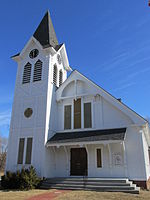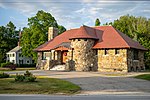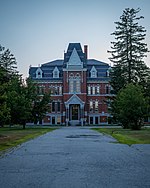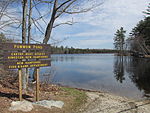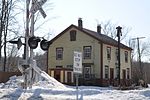Plains Cemetery
1725 establishments in the Thirteen ColoniesCemeteries established in the 18th centuryCemeteries on the National Register of Historic Places in New HampshireKingston, New HampshireNational Register of Historic Places in Rockingham County, New Hampshire ... and 1 more
New Hampshire Registered Historic Place stubs
Plains Cemetery, also known as Village Cemetery, is a historic cemetery on Cemetery Lane in Kingston, New Hampshire. Established circa 1725, it includes the resting place of Josiah Bartlett, the second signer of the Declaration of Independence. The cemetery was added to the National Register of Historic Places in December 2021.
Excerpt from the Wikipedia article Plains Cemetery (License: CC BY-SA 3.0, Authors).Plains Cemetery
Ronnie Lane,
Geographical coordinates (GPS) Address Nearby Places Show on map
Geographical coordinates (GPS)
| Latitude | Longitude |
|---|---|
| N 42.934 ° | E -71.0522 ° |
Address
Ronnie Lane 29
03848
New Hampshire, United States
Open on Google Maps
